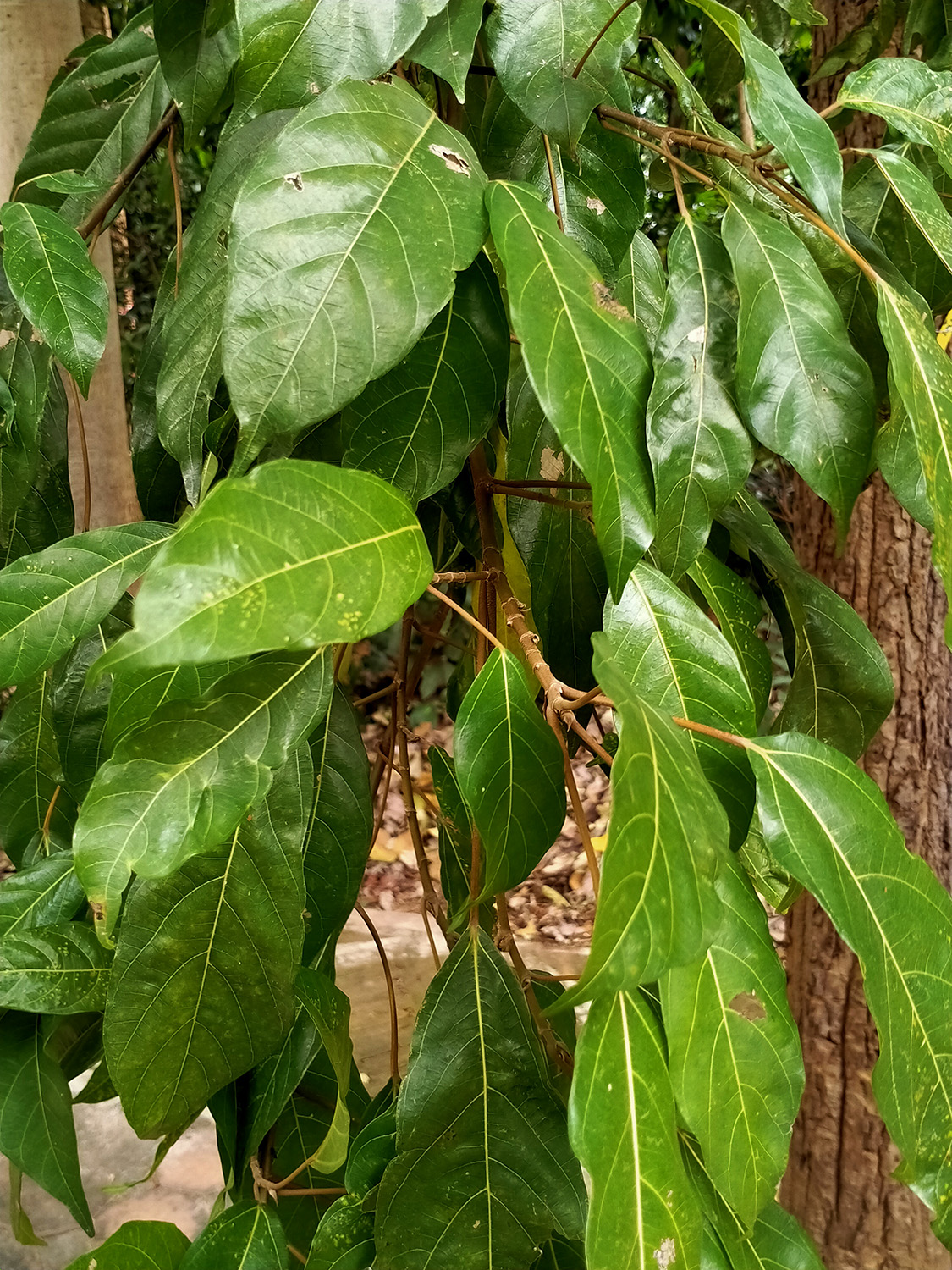มะเดื่ออุทุมพร

ระบบจะตอบกลับภายใน 24 ชั่วโมง
ขอบคุณสำหรับข้อเสนอแนะและข้อมูลเพิ่มเติม เราจะนำข้อมูลของท่านไปพัฒนาระบบให้ดียิ่งขึ้น
มะเดื่อชุมพร มะเดื่อชุมพร ชื่อสามัญ Cluster fig, Goolar (Gular), Fig มะเดื่อชุมพร ชื่อวิทยาศาสตร์ Ficus racemosa L. (ชื่อพ้องวิทยาศาสตร์ Ficus glomerata Roxb.) จัดอยู่ในวงศ์ขนุน (MORACEAE) มะเดื่อชุมพร มีชื่อท้องถิ่นอื่น ๆ ว่า เดื่อเกลี้ยง (ภาคเหนือ), มะเดื่อน้ำ มะเดื่อหอม หมากเดื่อ เดื่อเลี้ยง (ภาคอีสาน), มะเดื่อ มะเดื่อเกลี้ยง มะเดื่อชุมพร เดื่อน้ำ กูแซ (ภาคใต้), มะเดื่อดง, มะเดื่อไทย, มะเดื่ออุทุมพร เป็นต้น
ประโยชน์ของมะเดื่อชุมพร ใช้เป็นยาแก้ไข้ ถอนพิษไข้ กระทุ้งพิษไข้ แก้ไข้หัว ไข้กาฬ หรือไข้พิษทุกชนิด (ราก) ช่วยกล่อมเสมหะและโลหิต (ราก) ช่วยแก้อาเจียน (เปลือก) ช่วยแก้อาการร้อนใน (ในคาบสมุทรมลายู) (ราก) ช่วยแก้ธาตุพิการ (เปลือก) ผลดิบช่วยแก้โรคเบาหวาน (ผลดิบ) เปลือกต้นใช้รับประทานแก้อาการเสีย ท้องร่วง (ที่ไม่ใช่บิดหรืออหิวาตกโรค) (เปลือกต้น) ช่วยในการขับถ่าย ป้องกันอาการท้องผูก ผลสุกมีฤทธิ์เป็นยาระบาย (ผลสุก) ช่วยห้ามเลือดและชะล้างบาดแผล (เปลือกต้น) ใช้เป็นยาสมานแผล (เปลือกต้น) ช่วยแก้ประดงเม็ดผื่นคัน (เปลือก) ในคาบสมุทรมลายูจะใช้รากต้มกับน้ำ ปรุงเป็นยาบำรุงหลังการคลอดบุตร (ราก) ไม้มะเดื่อจัดเป็นไม้มงคลที่สามารถปลูกไว้ในบ้านและยังเป็นไม้ศักดิ์สิทธิ์ เพราะในสมัยอดีตจะใช้ไม้มะเดื่อทำพระที่นั่งในพระราชพิธีราชาภิเษก ใช้ทำเป็นกระบวยตักน้ำเจิมถวาย และใช้ทำหม้อน้ำสำหรับกษัตริย์ทรงใช้ในพระราชพิธี ผลสุกสามารถใช้เป็นอาหารสัตว์ได้หลายชนิด เช่น กระรอก นก หนู ฯลฯ แถมยังเป็นการขยายพันธุ์มะเดื่อชุมพรไปด้วยในตัว เพราะเมล็ดของมะเดื่อจะงอกดีมากขึ้นเพราะมีน้ำย่อยในกระเพาะของสัตว์ ยางเหนียวใช้ลงพื้นสำหรับปิดทอง เนื้อไม้ของต้นมะเดื่อสามารถใช้ทำเป็นแอกไถ หีบใส่ของ ไม้จิ้มฟันได้ ใบอ่อนใช้นึ่งกินเป็นผักจิ้มน้ำพริก ยอดอ่อนใช้ลวกกินกับน้ำพริก ผลอ่อนใช้รับประทานเป็นอาหารได้ หัวใต้ดินสามารถนำไปนึ่งรับประทานได้ ช่อดอกหรือที่คนไทยเรียกว่าผลหรือลูกมะเดื่อ สามารถนำมารับประทานเป็นผักได้โดยใช้จิ้มกับผัก หรือใช้ทำแกงอย่างแกงส้มก็ได้เช่นกัน แหล่งอ้างอิง : เว็บไซต์สำนักงานโครงการอนุรักษ์พันธุกรรมพืชอันเนื่องมาจากพระราชดำริ สมเด็จพระเทพรัตนราชสุดาฯ สยามบรมราชกุมารี, เว็บไซต์มูลนิธิหมอชาวบ้าน, เว็บไซต์สถาบันวิจัยและพัฒนาพื้นที่สูง (องค์การมหาชน) ภาพประกอบ : www.magnoliathailand.com (George)
ข้อมูลอ้างอิง (Source) : https://medthai.com/
Cluster Fig Root is the dried root of Ficus racemosa L. (F. glomerata Roxb.) (Family Moraceae), Herbarium Specimen Number: DMSC 5221, Crude Drug Number: DMSc 1077.
Constituents Cluster Fig Root contains triterpenoids such as lupeol, lupeol acetate, α-amyrin acetate, and β-amyrin acetate. It also contains sterols, tannins, etc.
Description of the plant (Figs. 1a, 1b) Evergreen or deciduous tree up to 30 m tall, monoecious; becoming buttressed, often with irregular crown; bark whitish to pinkish brown, smooth when young, cracked when aged, exudating ivory or pinkish latex; young twig solid, finely pubescent. Leaves simple, spirally arranged, elliptic, obovate, oblong, lanceolate or subovate, 5 to 20 cm long, 3 to 10(–12) cm wide, apex acute or acuminate, base obtuse, oblique or cuneate, margin entire, sometimes irregularly dentate or sublobate, coriaceous, sparsely pilose or glabrescent on both surfaces, lateral nerves 4 to 9 pairs, conspicuous on the lower surface; petiole 1.5 to 7.5 cm long, grooved, brownish, minutely hairy; stipule triangular ovate, 1 to 1.5 cm long, about 5 mm wide, brownish, subpersistent or caducous. Inflorescence and fruit known as syconium or fig, cauliflorous or borne
on leafless branches, up to 25 cm long; peduncle 0.3 to 1.2 cm long; basal bracts 3, 1 to 2 mm long, persistent; receptacle subpyriform to globose, puberulous; without lateral bracts. Flowers 3 types: male flower sessile, ostiolar bracts many, tepals 3- to 4-connated, lobes dentate-lacerate, reddish, stamens 1 to 3, pistillode present; female flower sessile or subsessile, tepal as in male, ovary with reddish dots, substipitate, style lateral, glabrous,
stigma simple; gall flower dispersed among females, pedicellate, ovary dark red and glabrous. Fruit pyriform or depressed subglobose, 3 to 5 cm in diameter when fresh, 1.5 to 3 cm in diameter when dry, green when young, pinkish to purple-red or orange at maturity, usually streaked, puberulous, apex flat to slightly concave, ostiole about 3 mm in diameter, prominent; internal hairs absent.
Description Odourless; taste, bland.
Macroscopical (Fig. 1a) Obliquely, longitudinally or transversely sliced roots, varied in shape and size; bark 1 to 3 mm thick, dark brown, with scattered irregular scars; wood light brown, some with darker rings in the centre.
Microscopical (Figs. 2a, 2b, 2c, 2d) Transverse section of the root shows periderm, cortex, phloem, vascular cambium, and xylem. Periderm, several layers of brown thin-walled rectangular cork cells. Cortex, parenchyma, some containing starch grains, prismatic crystals of calcium oxalate or brown substance, and sclereids. Phloem, small parenchyma, some containing starch grains, prismatic crystals of calcium oxalate or brown substance, phloem fibres, and phloem ray cells. Vascular cambium, several layers of small thin-walled rectangular cells. Xylem, scalariform and bordered-pitted vessels (some containing brown substance), xylem fibres, thick-walled porous xylem parenchyma, and xylem ray cells.